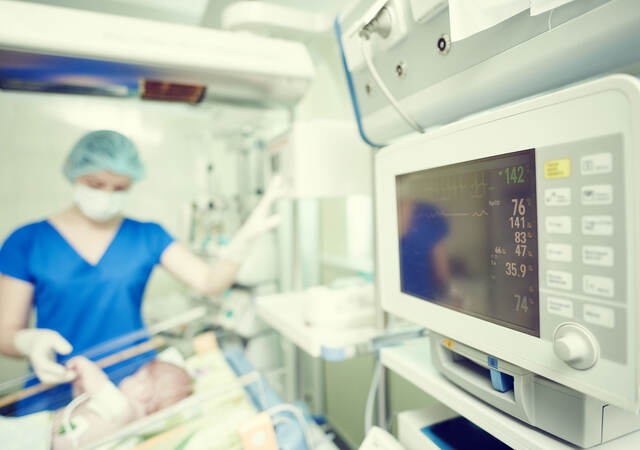June 2, 2023
Mexico’s Ministry of Health has updated its requirements for medical device registration submissions.
This regulatory update on the recently released 5.0 edition of the Supplement of Medical Devices of the Mexican Pharmacopoeia (hereafter: Pharmacopoeia), focuses on Appendix III, which describes the requirements for medical device registrations, and subsequent modifications and renewals. In particular, we discuss revisions to the general information as well as sanitary registrations.
Medical device “sanitary” registrations
The overall process for each submission type generally remains unaffected, but there are a few key changes to ensure the Pharmacopoeia is up-to-date with the latest Health Supplies Regulation (Reglamento de Insumos para la Salud; hereafter the Reglamento) and the General Health Law (Ley General de Salud; hereafter, the Law).
Appendix III new definitions
Some important concepts are now defined.
Manufacturer is defined as an individual or corporation responsible for the safety, performance, quality, design, manufacture, conditioning, assembly of a system, restoration, modification, adaptation or remanufacturing of a medical device before it is released on the market, released as a finished product or put into operation or service, regardless of whether these operations are carried out by this same person or by a third party covered by his own account
The definition of Legal Manufacturer is almost identical to the above, excluding the remanufacturing activities, portentously including the caveat of commercialization as the next step after completion of all the above manufacturing-related activities.
It is also confirmed that companies that use original equipment manufacturer (OEM) contracts with their own brand for products manufactured entirely by another entity are also defined as manufacturers. This is also aligned with the EU Medical Devices Regulation (MDR) 2017/745.
Real Manufacturer is defined as the entity in charge of manufacturing, assembling, or remanufacturing a medical device (may be a subsidiary of the Legal Manufacturer), or contracted by the Legal Manufacturer to perform manufacturing activities through a quality or maquila agreement.
Intended Use is also now defined, and it is identical to the Intended Purpose in the EU MDR, specifying also that it must be supported by the clinical evaluation, and it must indicate the target patient groups and the conditions that are intended to diagnose, treat or control.
The last new term in this Appendix is for Clinical Evaluation consistent with the EU MDR definition.
References to the updated definitions of Medical Device (now includes Software as a Medical Device), and the expansion of medical device categories to include these products are provided here (per the May 10, 2021 update of the Law).
Requirements for new registration process
Though not officially described in legislation until now, Emergo by UL has been familiar with COFEPRIS’s practice with kit registration submissions. Kit registration applications shall be accompanied by the existing registrations of each of the components, supported by letters of authorization from the registration holders endorsing the applicant’s request.
One of the most relevant updates concerns a reference to the update from May 31, 2021, to article 153 of the Reglamento, confirming that the documents submitted to obtain a registration must be in Spanish or English language (translated to Spanish if in any other language). Although this reference is preceded by a confusing statement that all documentation must be submitted in Spanish, the Reglamento’s directive is clear and prevails over this apparent contradiction.
Updates to certain requirements
General information: As of now, the inclusion of a general description of the device, Classification and medical device category, list of accessories and consumables (if applicable) and applicable regulation to the device (and its references) are mandatory in this section.
Instructions for Use (IFU) and User Manual: From an application submission perspective, an electronic format is now accepted with its printed version. Note that according to the legislation, printed Instructions for Use and User Manuals are still required in Mexico though in practice electronic IFU may be accepted if the instruction for how to access the IFU is outlined on the label.
Technical and Scientific information: Manufacturing flowcharts are now identified as a requirement, as well as specific details about sterilization validation and complete reports.
Certificates of Analysis: The concept has been expanded to include generally acceptable alternatives to this document, such as Certificate of Conformity, DHR, Batch Production Record, Routers, Shop floor paperwork (SFP) and Final Inspection Report (FIR). These documents must include identification data for the product, lot or batch number, manufacturing date and qualitative and quantitative acceptance criteria and test results. Digitally signed Certificates of Analysis are deemed valid as long as they are endorsed by the regulator responsible for the applicant.
The Technovigilance Report requirement has now been eliminated.
Test reports must now be accompanied by validation of the analysis methods.
Shelf life dates are now confirmed to be tentative when presenting accelerated aging studies (updated upon the submission of real-time aging studies).
Biocompatibility (MGA-DM 10993-1) studies and Performance and safety reports are now applicable to class II and III implantable products explicitly.
In addition, for the product which requires local testing (diagnostic agents for hepatitis C determination, for hepatitis B surface antigen, blood typing sera, HIV, allergens, and condoms), test results performed abroad, are only accepted if there are no local laboratories capable of testing the product (with the necessary testing panel, confirmed by a letter from the local laboratory).
Legal documents
This revision includes examples of documents equivalent to the Free Sales Certificate and Good Manufacturing Practices Certificate (notably mentioning the GMP certificate from COFEPRIS for manufacturers based in Mexico), as well as the legalization requirements for foreign manufacturers.
Additionally, there are now several details specific to the Letters of Representation and the Manufacturing/Maquila Agreement.
Requirements to obtain the sanitary registration of medical devices considered as “low-risk”
The need for the Free Sales Certificates has been eliminated as a requirement for registration of low-risk medical devices and acknowledges the possibility of submitting these applications electronically (although this alternative is not yet available on any COFEPRIS electronic platform).
Concluding remarks
These changes will become official on July 10 (60 calendar days after the publication of May’s 10th Notice on the Diario Oficial de la Federación, confirming when will the Supplement of Medical Devices 5.0 be in effect). We still eagerly await a method to electronically submit an application for a medical device on a COFEPRIS platform.
In the meantime, Emergo by UL will start including the new technical documents in its sanitary registration submissions.
Get connected with our sales team
Thanks for your interest in UL's products and services. Let's collect some information so we can connect you with the right person.






